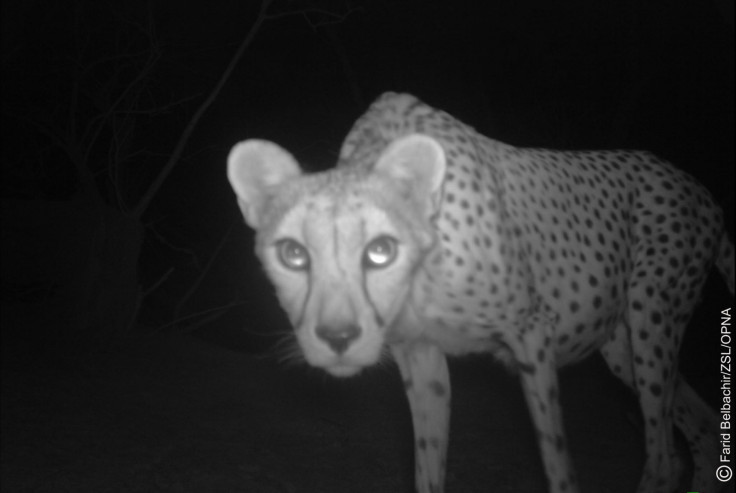Critically endangered Saharan cheetah 'one of rarest carnivores on the planet' [Photos]

The critically endangered Saharan cheetah has been confirmed as one of the rarest carnivores on the planet.
Scientists from the Wildlife Conservation Society, the Zoological Society of London and other groups have found the species exists at extremely low densities, and will require vast areas for their conservation.
Published in PLOS One, their research also provides some of the only photographs of the Saharan cheetah in the world. It is estimated there are around 250 of the species left in the wild.
Farid Belbachir, lead-author of the study, said: "This is the first time we have been able to collect scientific data on the rare Saharan cheetah, as in the past we have had to rely on anecdotes and guesswork. We hope that this important carnivore does not follow the path to extinction like other Algerian desert species such as the addax antelope and dama gazelle."

Findings of the study showed the Saharan cheetah has adapted its behaviour to cope with the desert environment – providing scientists with a better understanding of how to approach their conservation.
Saharan cheetahs are active at night, probably to avoid people and the heat. Findings also show they must cover a vast amount of ground to find prey, meaning they occur at lower densities than any other cheetahs in Africa.
While their habitat is still relatively healthy, authors say more should be done to ensure their survival.
The study said: "Deserts are particularly vulnerable to human impacts and have already suffered a substantial loss of biodiversity. In harsh and variable desert environments, large herbivores typically occur at low densities, and their large carnivore predators occur at even lower densities.

"The continued survival of large carnivores is key to healthy functioning desert ecosystems, and the ability to gather reliable information on these rare low density species, including presence, abundance and density, is critical to their monitoring and management.
Infrared camera trap surveys were carried out over two to three months in the Ahaggar Cultural Park, south central Algria. In total, 32 records of the cheetah were obtained.
Sarah Durant, co-author from WCS and ZSL, said: "This research provides us with important new insights into the world of this remarkable desert-dwelling large cat. I hope that it not only provides invaluable scientific information about the ecology of the Saharan cheetah for the first time but also reminds the world of the value of studying and protecting desert species and their environments, which are often overlooked by researchers and conservation programs."
© Copyright IBTimes 2025. All rights reserved.






















